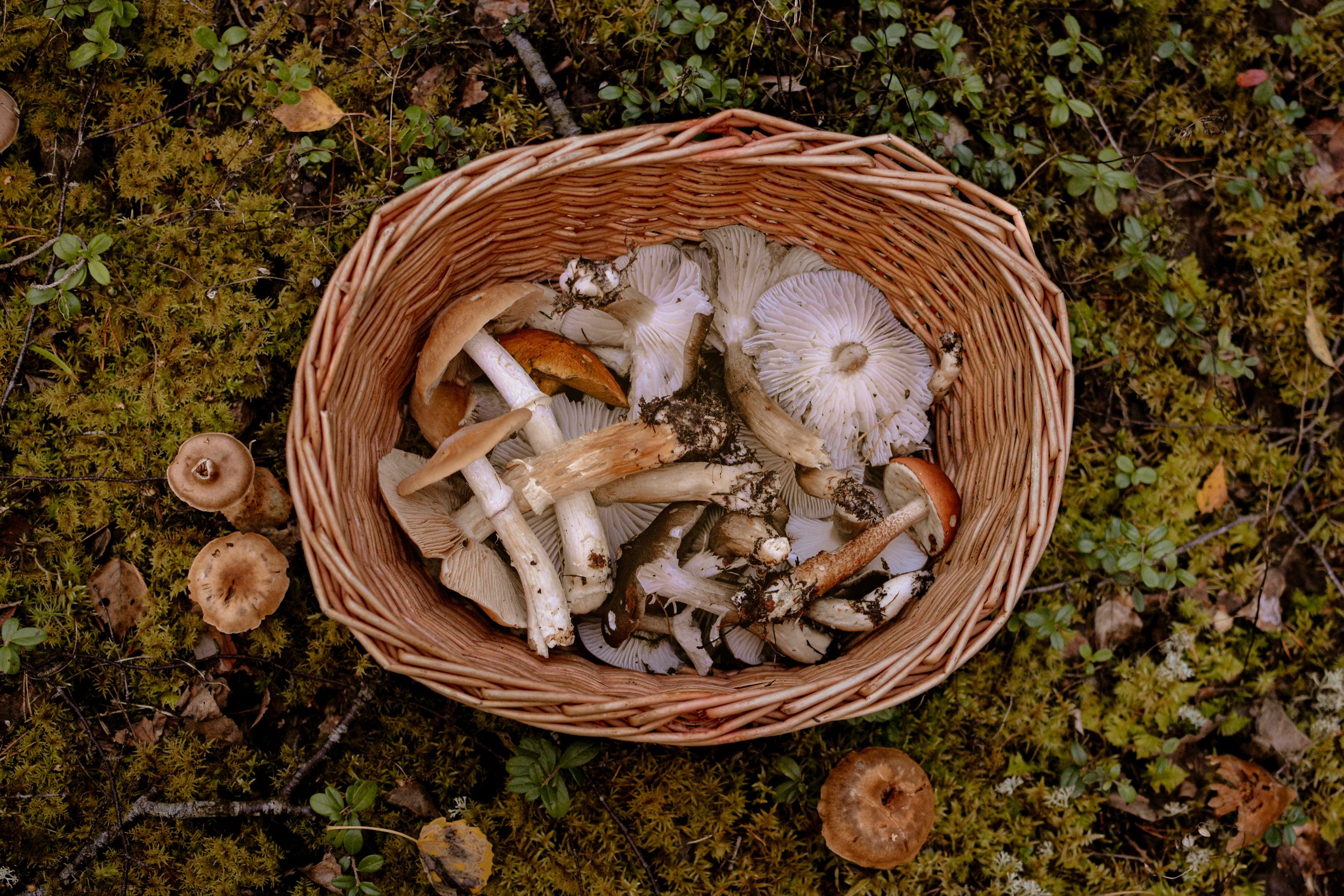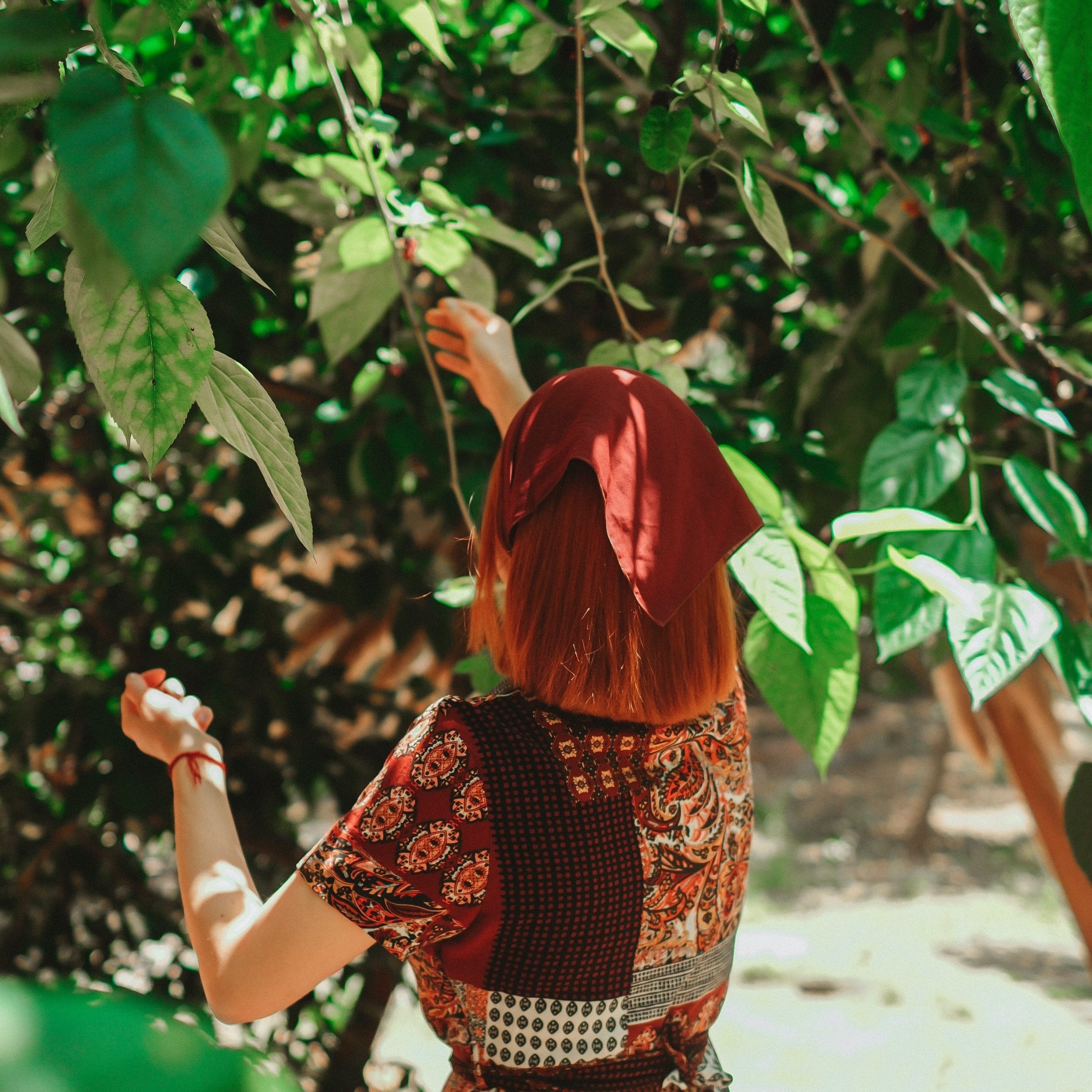The Charms of Foraging: Exploring Nature's Edible Treasures
Jul.20.2023 By Mosey Abe
In today's fast-paced world, there is a growing desire to reconnect with nature and rediscover the bountiful gifts it has to offer. Foraging, the age-old practice of gathering wild ingredients from forests, meadows, and other natural landscapes, has become a captivating way to explore and embrace the wonders of the outdoors. In this article, we will delve into the art of foraging, providing insights into the process of gathering wild ingredients and showcasing how renowned chefs skillfully incorporate these natural flavours into their gourmet dishes.
Photo by Gülşah Aydoğan from Pexels: https://www.pexels.com/photo/woman-picking-fruits-in-an-orchard-16973487/
The Thrill of Foraging
Foraging is more than just a means of obtaining fresh, organic ingredients. It's a sensory experience that allows us to engage with the environment, connect with the seasons, and discover nature's edible treasures. From the rustling leaves underfoot to the earthy aroma of mushrooms, every foraging expedition is a thrilling adventure that awakens our senses and deepens our appreciation for the natural world.
Exploring Wild Ingredients
Nature's pantry is a treasure trove of diverse and fascinating ingredients that are waiting to be discovered through the art of foraging. Whether you find yourself in a lush forest, a sun-drenched meadow, or along the coastal shoreline, you'll be amazed by the incredible variety of edible plants, mushrooms, herbs, and more that nature generously offers.
Delicate Wildflowers
Wildflowers, with their vibrant hues and delicate petals, not only add beauty to the landscape but also present a delightful range of flavours. From the sweet-scented elderflowers used in refreshing cordials and syrups to the subtly peppery taste of nasturtium blossoms, wildflowers can infuse dishes with a touch of whimsy and a burst of freshness. Chefs often use edible flowers to garnish salads, desserts, and cocktails, turning ordinary dishes into visually stunning masterpieces.
Robust Mushrooms
The world of wild mushrooms is a captivating realm that entices both seasoned foragers and adventurous chefs. From the earthy and meaty porcini to the delicate and nutty chanterelles, mushrooms offer an incredible depth of flavours and textures. Their distinct umami notes can elevate sauces, soups, risottos, and even vegetarian dishes, providing a rich and satisfying culinary experience. However, it is important to exercise caution when foraging mushrooms, as some species can be poisonous. Proper identification or seeking guidance from experienced foragers is crucial to ensure safety.
Delectable Finds
Foraging enthusiasts eagerly seek out specific treasures that are highly prized for their unique tastes and culinary potential. Wild berries, such as blackberries, blueberries, and raspberries, offer a burst of sweetness that can enhance both sweet and savoury dishes. These juicy morsels can be transformed into delectable jams, sauces, or used to add a delightful tang to salads and desserts.
Ramps, also known as wild leeks, are another sought-after ingredient that adds a pungent, garlicky flavour to dishes. Chefs and food enthusiasts eagerly await their short seasonal appearance to incorporate them into soups, pestos, and risottos, infusing their creations with a distinct and vibrant taste.
Fiddlehead ferns, the young, coiled fronds of certain fern species, offer a unique culinary experience. With a flavour reminiscent of asparagus and a delicate texture, they can be sautéed, steamed, or incorporated into stir-fries, providing a fresh and verdant touch to the plate.
And then there are the elusive truffles, highly prized and sought after for their earthy and intoxicating aroma. These underground fungi, often found in symbiotic relationships with certain tree roots, are a culinary luxury. Truffles can transform a simple dish into a gourmet masterpiece, whether shaved over pasta, infused into oils, or delicately incorporated into sauces, infusing the dish with its unmistakable and exquisite flavour.
By exploring these wild ingredients and understanding their unique flavour profiles, foragers and chefs alike can unlock the full potential of nature's edible treasures. From the delicate to the robust, each ingredient offers a world of culinary possibilities, encouraging creativity and a deep appreciation for the natural world's abundant gifts. So, venture forth into the wilderness, armed with knowledge and curiosity, and let the flavours of wild ingredients enchant your taste buds and elevate your dining experiences to new heights.
Photo by Michael Burrows from Pexels: https://www.pexels.com/photo/positive-young-guy-washing-berries-in-water-stream-7125521/
The Art of Responsible Foraging
Responsible foraging is essential for the long-term sustainability and preservation of our precious ecosystems. As we venture into the wilderness to gather wild ingredients, it becomes our responsibility to educate ourselves about the local regulations and ethical guidelines that govern foraging practices. These guidelines are put in place to protect fragile ecosystems and ensure that the balance of nature is maintained.
Being mindful of our impact on the environment is paramount. Over-harvesting can deplete wild populations, disrupt natural habitats, and negatively impact biodiversity. It's crucial to harvest in moderation, taking only what is needed and leaving enough for the plants, fungi, and animals to thrive. By respecting the natural rhythms and cycles of the ecosystem, we allow for regeneration and ensure the continued availability of wild ingredients for future generations to enjoy.
Additionally, we should be cautious not to disturb delicate ecosystems while foraging. Some habitats, such as wetlands or protected areas, require extra care and attention. It's important to tread lightly, staying on designated paths or areas to minimize our footprint. By preserving the integrity of these habitats, we protect the diverse plant and animal species that rely on them for their survival.
Practising responsible foraging goes beyond the act of gathering ingredients. It's about cultivating a deep respect and gratitude for nature's offerings. By nurturing a harmonious relationship with the environment, we contribute to the preservation of our natural heritage. Through our actions today, we can ensure that future generations will have the opportunity to explore and experience the wonders of nature's pantry, fostering a sustainable and thriving connection with the natural world.
Culinary Delights from Foraged Ingredients
Renowned chefs have wholeheartedly embraced foraging as a means to unlock a world of unique flavours and elevate their culinary creations. By venturing into nature's abundant landscapes, they discover a plethora of wild ingredients that add depth, complexity, and a touch of whimsy to their dishes. These visionary culinary maestros understand that foraging is not merely a rustic tradition but a captivating art form that celebrates the beauty and diversity of natural ingredients.
Photo by ELEVATE from Pexels: https://www.pexels.com/photo/chef-preparing-vegetable-dish-on-tree-slab-1267320/
Foraged finds find their way onto the plates of these chefs, transforming their gourmet creations into culinary masterpieces. Delicate wild herb-infused oils add a subtle yet fragrant touch to dressings, marinades, and sauces, infusing them with the essence of the outdoors. Vibrant foraged salads burst with an array of textures and flavours, as chefs skillfully combine wild greens, edible flowers, and herbs to create stunning visual displays and mouthwatering taste sensations. Exquisite mushroom dishes showcase the expertise of these chefs, who painstakingly select and prepare wild mushrooms with an acute understanding of their unique qualities and nuances, resulting in dishes that exude earthiness, richness, and umami flavours.
These chefs not only showcase the flavours of foraged ingredients but also highlight their beauty, captivating diners with the visual allure of nature's edible treasures. Each dish becomes a work of art, combining flavours, textures, and aesthetics to create an unforgettable dining experience. By integrating foraged finds into their culinary repertoire, these chefs demonstrate that foraging is a dynamic and evolving practice, where nature's gifts are transformed into culinary expressions that delight the senses and ignite the imagination.
Through their foraging-inspired creations, renowned chefs invite diners to embark on a sensory journey, where the flavours and stories of the natural world unfold on their plates. These culinary visionaries demonstrate that foraging is not just an ancient practice rooted in tradition, but a constantly evolving art form that celebrates the diversity, beauty, and unparalleled flavours of nature's edible treasures. With each bite, they invite us to savour the connection between the wild and the refined, reminding us of the enchanting possibilities that lie within nature's bountiful embrace.
Connecting with Local Communities
Photo by Andrea Piacquadio from Pexels: https://www.pexels.com/photo/man-in-denim-long-sleeves-sitting-beside-tree-trunks-3776847/
Foraging goes beyond the act of gathering ingredients; it also fosters a deep connection with local communities. Many cultures around the world have a long-standing tradition of foraging, passing down knowledge from generation to generation. Engaging with local foraging communities can provide invaluable insights into regional specialties, traditional recipes, and sustainable harvesting practices. It's an opportunity to learn from the wisdom of those who have lived in harmony with nature for centuries.
Foraging offers a remarkable journey of exploration, allowing us to immerse ourselves in the natural world and discover its edible treasures. By venturing into forests, meadows, and other pristine landscapes, we can engage with the seasons, deepen our understanding of the environment, and relish in the flavors of nature. The art of foraging not only satisfies our culinary curiosity but also cultivates a profound appreciation for the bountiful gifts that Mother Earth has to offer. So, lace up your boots, grab a basket, and embark on an unforgettable foraging adventure to experience the wonders of nature's edible charms.




